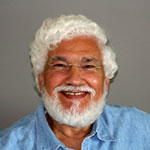September 6, 2018
On Sexual Harassment
By the time people realize that they are dealing with sexual harassment, it is often too late.
Police have been notified, a case reaches the courts, lawyers become involved, hush-money may (or may not) have been paid, the media inform (or mis-inform) the public, positions are staked out, opinion-makers weigh in … and a battle in which there are often more losers than winners begins.
Sexual harassment in the workplace – an increasingly prevalent form of this odious crime, usually perpetrated by men in power against their female subordinates – has recently seen a long-needed upsurge in attention thanks to the #MeToo movement in both the U.S. and Canada.
But the first time it received national front-page coverage in the U.S. was 27 years ago, in 1991, when the Senate Judiciary Committee conducted hearings into Oklahoma University Law School Professor Anita Hill's allegations of sexual harassment by former employer, and then Supreme Court nominee, Clarence Thomas.
American viewers watched those hearings in unprecedented numbers and nearly everyone had an opinion.
The majority of male viewers assumed Hill was lying, or that even if a harassment incident had occurred, it was 10 years in the past and should not be allowed to negatively affect Thomas's appointment. Most women believed that Hill was telling the truth and, regardless of when the sexual misbehavior occurred, Thomas did not belong on the bench of the nation’s highest court.
Despite the high profile of the hearings, the U.S. Senate confirmed Thomas and he joined the Supreme Court just a few weeks later.
Half-a-dozen years later, in 1997, another case of sexual harassment hit the headlines, this time involving then-President Bill Clinton. Paula Jones filed a sexual harassment lawsuit alleging that he’d engaged in sexual activity with White House intern Monica Lewinsky. In this case, the issue hinged on whether he lied in his grand jury testimony, not on the sexual harassment itself.
Sexual harassment crimes have traditionally been among the least likely to be reported to police, due to victims’ fears of reprisal, shaming, ridicule, and lack of access to competent help within the law-enforcement system. But 2017 in Canada saw a spike of 28,551 incidents reported in the wake of major media stories on allegations against high-profile men such as film mogul Harvey Weinstein.
On July 23, 2018 the Canadian Press that reported that in the #MeToo movement generated more sexual assaults being reported, while those that police deemed “unfounded” were on the decline.
Statistics Canada echoed similar findings, saying that more severe and violent sexual assaults were less likely to be deemed “unfounded” than incidents such as unwanted touching or other non-consensual sexual contact.
“There has been a lot of attention to sexual assault, things like the ‘#MeToo’ movement, the ‘Time's Up’ movement. We definitely feel that these might have had an impact on some of the reporting as well as police reviewing their files,” noted StatsCan analyst Warren Silver.
So, what can you do if you are sexually harassed, or accused of it? And how can we all prevent sexual harassment from happening in the first place, at work or elsewhere?
These are just two of the difficult questions American lawyer Linda Gordon Howard answers in her Sexual Harassment Handbook.
Howard draws on some 30 years’ experience in training thousands on “how to understand and comply with the difficult and confusing law of sexual harassment” and includes a set of true-or-false statements to help readers assess their own knowledge. Here are a few examples:
-A romantic consensual relationship is permitted, so long as the supervisor and the subordinate report their relationship to management.
-Men cannot be sexually harassed because men always enjoy sexual attention from women.
-An employee can be harassed by another employee of the same sex only if the other employee is a homosexual.
-Before an employee can complain about being sexually harassed, he or she must be able to prove that the behavior was sexual harassment.
-It is never sexual harassment for a naturally affectionate or expressive person to pat or touch another employee, even if the other person doesn't want to be touched, so long as it isn't meant to be sexual or offensive.
-The sexual harassment policy does not apply to employees who have never harassed anyone in the past.
-If an employee complains and it is later determined that he or she wasn't sexually harassed, the complaining employee will be disciplined.
-An employee who believes he or she has been sexually harassed must report the behavior to his or her immediate supervisor.
If your answers to all eight of the above statements are FALSE (and you may be surprised by some of them…) you’ve passed the sexual harassment knowledge test.
“Rather than criticizing men, I urge women and men to share more openly their experiences with and concerns about maintaining personal boundaries in the workplace,” Howard emphasizes.
“Rather than eliminating all sexual banter and playfulness, which I think gives us sterile humorless workplaces, I urge communicating to discover one another’s personal boundaries and how our actions affect our fellow workers.”
She adds, “It is possible to work together as human beings who value each other, even flirt and joke together, while steering clear of offensive behavior.”
And perhaps I can add to Howard’s eminently sensible and mindful approach, that it’s all about being authentically adult in our relationships.








